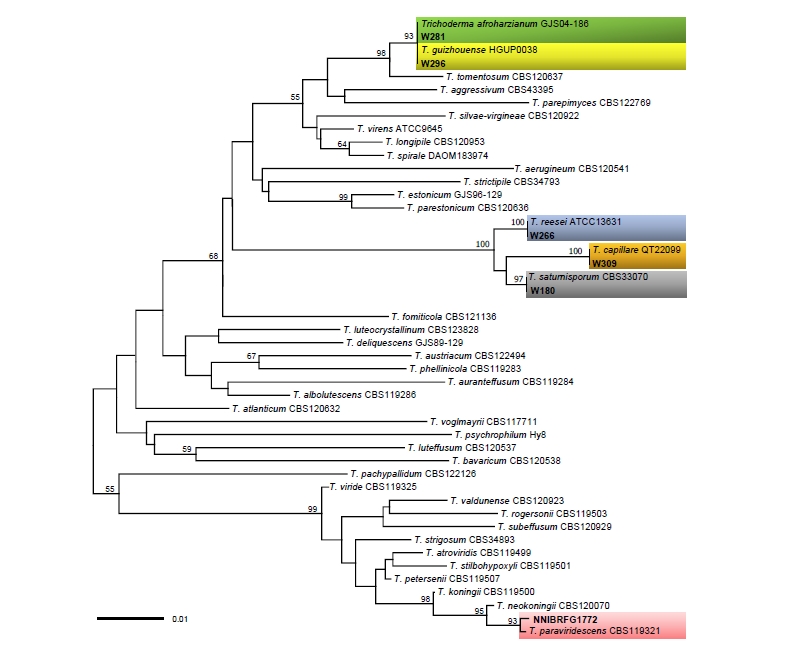Abstract
Trichoderma (Hypocreaceae) is one of the most ubiquitous genera worldwide. This genus has an excellent ability to adapt to diverse environments, even under poor nutritional conditions, such as in freshwater. However, little is known about the diversity of Trichoderma species in freshwater environments. In this study, we isolated diverse fungal strains from algae, plant litter, and soil sediment in streams in Korea. The strains were identified based on molecular phylogenetic analyses of internal transcribed spacer (ITS) rDNA and translation elongation factor 1 (TEF1α) sequences. We also investigated their morphological characteristics by microscopic observation and determination of cultural features on different media. As a result, six Trichoderma species were found in Korea: T. afroharzianum, T. capillare, T. guizhouense, T. paraviridescens, T. reesei, and T. saturnisporum. Interestingly, T. paraviridescens showed both cellulose activity and hypoxia stress tolerance phenotypes, indicating its role as a decomposer in freshwater ecosystems. Our study revealed that freshwater environment could be a good candidate for investigating the species diversity of Trichoderma.
Figures & Tables

Fig. 1. Minimum evolution tree based on internal transcribed spacer rDNA sequences. Bootstrapping support values higher than 50% are shown above/below the branches. The specimens collected in Korea are shown in bold. The scale bar equals the number of nucleotide substitutions per site.


